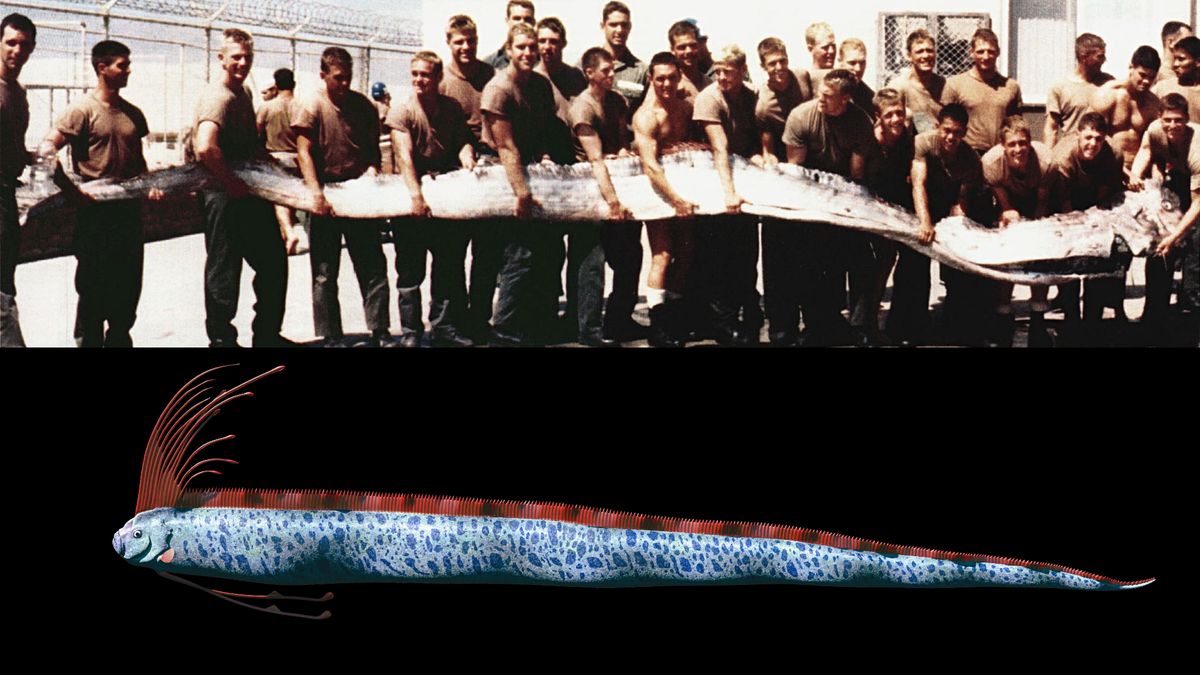Name: Giant oarfish (Regalecus glesne)
Where it lives: In the mesopelagic zone of the Mediterranean Sea, Atlantic and Pacific Oceans
What it eats: Krill, plankton, crustaceans and squid
Why it‘s awesome: According to Japanese myth, oarfish are harbingers of earthquakes, and their appearance signals a tremor could be about to hit.
In traditional Japanese legend, oarfish were known as “ryugu no tsukai” meaning “the messenger from the sea dragon god’s palace.” People believed oarfish would come up from the deep to warn people when an earthquake was imminent. This myth caused a stir in 2011 when 20 oarfish washed ashore in the months before Japan was struck by the country’s most powerful earthquake.
While there is no evidence to back up the link between oarfish sightings and earthquakes, in August 2024 snorkelers found an oarfish in California — two days before an earthquake hit the region. However, scientists believe this was a coincidence.
Related: New piranha-like fish with ‘human teeth’ and Eye of Sauron marking found deep within the Amazon
Also known as the king of herrings or ribbonfish, the oarfish is the world’s longest bony fish. The species’ elongated body is usually around 10 feet (3 meters) long, but individuals can grow to 36 feet (11m) — around twice as long as a giraffe is tall.
“The striking nature of this long, sinewy fish is what many people say gave rise to the original notion of sea serpents,” Russ Vetter, a biologist at National Oceanic and Atmospheric Administration’s Southwest Fisheries Science Center, said on the podcast On The Line. “From beginning to end, this has all the qualities you would want in a sea serpent.”
Oarfish don’t have any visible teeth and instead filter water to eat tiny prey. “You could put your hand into the mouth, around the mouth, down the throat and not even scratch your skin,” Vetter said.
These unusual creatures live in the mesopelagic zone of the deep sea where there is no light — one reason we know so little about them and why sightings are so rare. They usually live around 650 feet (200 m) below the surface but can be found as deep as 3,300 feet (1,000 m).
Like other animals in this zone, oarfish swim to the surface at night to find food before returning to the safety of the deep during the daytime. In the rare instances that oarfish are seen in shallow waters, they are usually sick, dying or were caught in strong currents.


